Berg J.M., Tymoczko J.L., Stryer L. Biochemistry
Подождите немного. Документ загружается.

I. The Molecular Design of Life 12. Lipids and Cell Membranes
Summary
Many Common Features Underlie the Diversity of Biological Membranes
Biological membranes are sheetlike structures, typically from 60 to 100 Å thick, that are composed of protein and lipid
molecules held together by noncovalent interactions. Membranes are highly selective permeability barriers. They create
closed compartments, which may be entire cells or organelles within a cell. Proteins in membranes regulate the
molecular and ionic compositions of these compartments. Membranes also control the flow of information between cells.
Fatty Acids Are Key Constituents of Lipids
Fatty acids are hydrocarbon chains of various lengths and degrees of unsaturation that terminate with a carboxylic acid
group. The fatty acid chains in membranes usually contain between 14 and 24 carbon atoms; they may be saturated or
unsaturated. Short chain length and unsaturation enhance the fluidity of fatty acids and their derivatives by lowering the
melting temperature.
There Are Three Common Types of Membrane Lipids
The major classes of membrane lipids are phospholipids, glycolipids, and cholesterol. Phosphoglycerides, a type of
phospholipid, consist of a glycerol backbone, two fatty acid chains, and a phosphorylated alcohol. Phosphatidyl choline,
phosphatidyl serine, and phosphatidyl ethanolamine are major phosphoglycerides. Sphingomyelin, a different type of
phospholipid, contains a sphingosine backbone instead of glycerol. Glycolipids are sugar-containing lipids derived from
sphingosine. Cholesterol, which modulates membrane fluidity, is constructed from a steroid nucleus. A common feature
of these membrane lipids is that they are amphipathic molecules, having hydrophobic and hydrophilic ends.
Phospholipids and Glycolipids Readily Form Bimolecular Sheets in Aqueous Media
Membrane lipids spontaneously form extensive bimolecular sheets in aqueous solutions. The driving force for membrane
formation is the hydrophobic interactions among the fatty acid tails of membrane lipids. The hydrophilic head groups
interact with the aqueous medium. Lipid bilayers are cooperative structures, held together by many weak bonds. These
lipid bilayers are highly impermeable to ions and most polar molecules, yet they are quite fluid, which enables them to
act as a solvent for membrane proteins.
Proteins Carry Out Most Membrane Processes
Specific proteins mediate distinctive membrane functions such as transport, communication, and energy transduction.
Many integral membrane proteins span the lipid bilayer, whereas others are partly embedded in the membrane.
Peripheral membrane proteins are bound to membrane surfaces by electrostatic and hydrogen-bond interactions.
Membrane-spanning proteins have regular structures, including β strands, although the α helix is the most common
membrane-spanning domain. Indeed, sequences of 20 consecutive nonpolar amino acids can be diagnostic of a
membrane-spanning α-helical region of a protein.
Lipids and Many Membrane Proteins Diffuse Rapidly in the Plane of the Membrane
Membranes are structurally and functionally asymmetric, as exemplified by the restriction of sugar residues to the
external surface of mammalian plasma membranes. Membranes are dynamic structures in which proteins and lipids
diffuse rapidly in the plane of the membrane (lateral diffusion), unless restricted by special interactions. In contrast, the
rotation of lipids from one face of a membrane to the other (transverse diffusion, or flip-flop) is usually very slow.
Proteins do not rotate across bilayers; hence, membrane asymmetry can be preserved. The degree of fluidity of a
membrane partly depends on the chain length of its lipids and the extent to which their constituent fatty acids are
unsaturated. In animals, cholesterol content also regulates membrane fluidity.
Eukaryotic Cells Contain Compartments Bounded by Internal Membranes
An extensive array of internal membranes in eukaryotes creates compartments within a cell for distinct biochemical
functions. For instance, a double membrane surrounds the nucleus, the location of most of the cell's genetic material, and
the mitochondria, the location of most ATP synthesis. A single membrane defines the other internal compartments, such
as the endoplasmic reticulum. Some compartments can exchange material by the process of membrane budding and
fusion. As with all membranes, the proteins associated with these membranes determine the specific biochemical
function. Specific amino acid sequences in the proteins direct these molecules to the appropriate compartment.
Key Terms
fatty acid
phospholipid
sphingosine
phosphoglyceride
sphingomyelin
glycolipid
cerebroside
ganglioside
cholesterol
amphipathic molecule
lipid bilayer
liposome
integral membrane protein
peripheral membrane protein
hydropathy plot
lateral diffusion
fluid mosaic model
targeting sequence
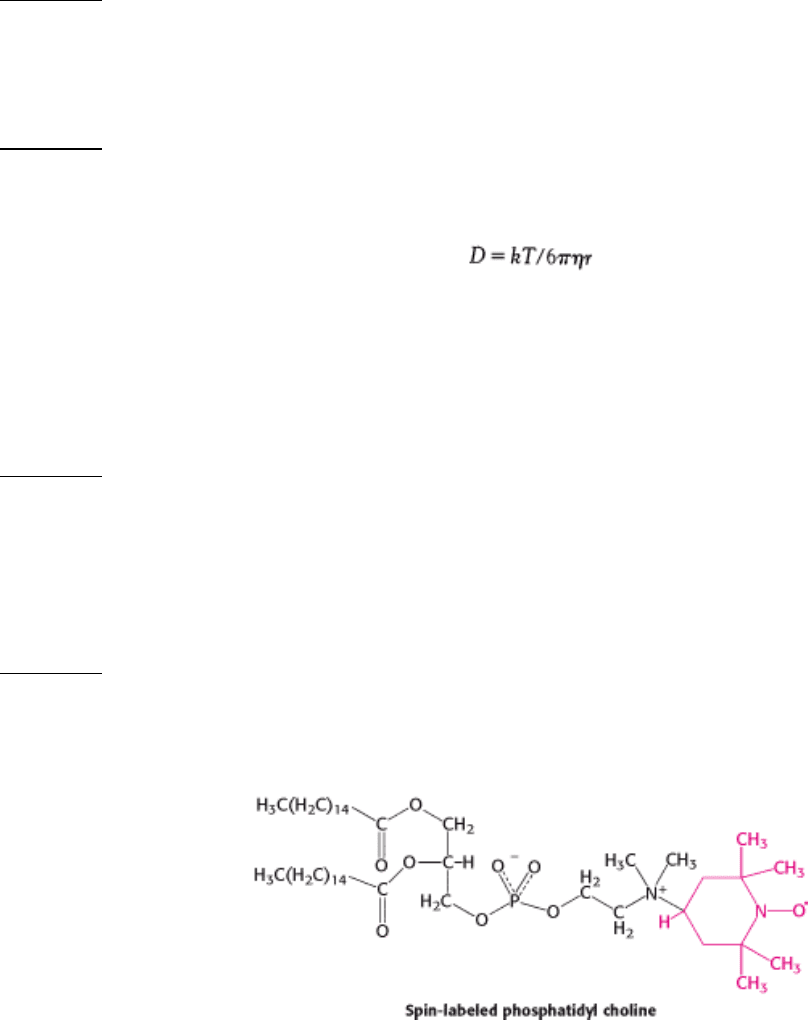
receptor-mediated endocytosis
I. The Molecular Design of Life 12. Lipids and Cell Membranes
Problems
1.
Population density. How many phospholipid molecules are there in a 1-µm
2
region of a phospholipid bilayer
membrane? Assume that a phospholipid molecule occupies 70 Å
2
of the surface area.
See answer
2.
Lipid diffusion. What is the average distance traversed by a membrane lipid in 1 µs, 1 ms, and 1 s? Assume a
diffusion coefficient of 10
-8
cm
2
s
-1
.
See answer
3.
Protein diffusion. The diffusion coefficient, D, of a rigid spherical molecule is given by
in which η is the viscosity of the solvent, r is the radius of the sphere, k is the Boltzman constant (1.38 × 10
-16
erg/
degree), and T is the absolute temperature. What is the diffusion coefficient at 37°C of a 100-kd protein in a
membrane that has an effective viscosity of 1 poise (1 poise = 1 erg s
-1
/cm
-3
)? What is the average distance traversed
by this protein in 1 µs, 1 ms, and 1 s? Assume that this protein is an unhydrated, rigid sphere of density 1.35 g cm
-3
.
See answer
4.
Cold sensitivity. Some antibiotics act as carriers that bind an ion on one side of a membrane, diffuse through the
membrane, and release the ion on the other side. The conductance of a lipid-bilayer membrane containing a carrier
antibiotic decreased abruptly when the temperature was lowered from 40°C to 36°C. In contrast, there was little
change in conductance of the same bilayer membrane when it contained a channel-forming antibiotic. Why?
See answer
5.
Flip-flop. The transverse diffusion of phospholipids in a bilayer membrane was investigated by using a paramagnetic
analog of phosphatidyl choline, called spin-labeled phosphatidyl choline.
The nitroxide (NO) group in spin-labeled phosphatidyl choline gives a distinctive paramagnetic resonance spectrum.
This spectrum disappears when nitroxides are converted into amines by reducing agents such as ascorbate.
Lipid vesicles containing phosphatidyl choline (95%) and the spin-labeled analog (5%) were prepared by sonication
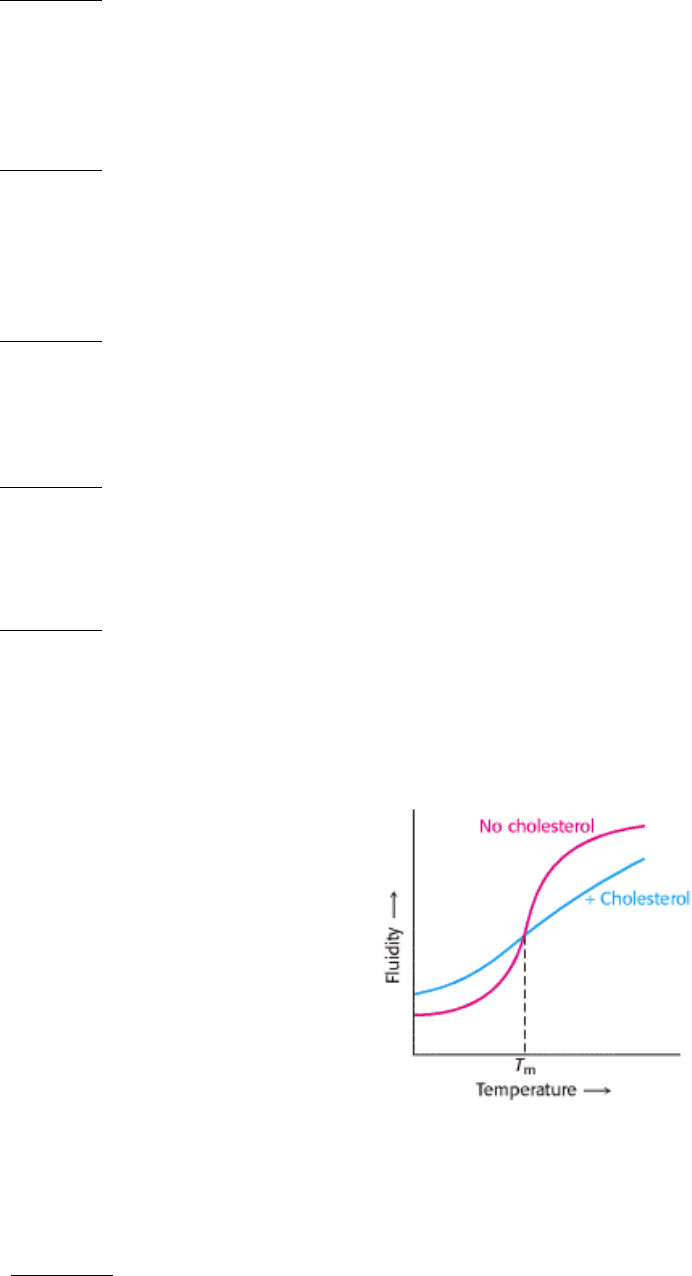
and purified by gel-filtration chromatography. The outside diameter of these liposomes was about 25 nm. The
amplitude of the paramagnetic resonance spectrum decreased to 35% of its initial value within a few minutes of the
addition of ascorbate. There was no detectable change in the spectrum within a few minutes after the addition of a
second aliquot of ascorbate. However, the amplitude of the residual spectrum decayed exponentially with a half-time
of 6.5 hours. How would you interpret these changes in the amplitude of the paramagnetic spectrum?
See answer
6.
Flip-flop 2. Although proteins rarely if ever flip-flop across a membrane, distribution of membrane lipids between
the membrane leaflets is not absolute except in the case of glycolipids. Why are glycosylated lipids less likely to flip-
flop?
See answer
7.
Cis versus trans. Why are most unsaturated fatty acids found in phospholipids in the cis rather than the trans
conformation? Draw the structure of a 16-carbon fatty acid as saturated, trans monounsaturated, and cis
monounsaturated.
See answer
8.
A question of competition. Would a homopolymer of alanine be more likely to form an α helix in water or in a
hydrophobic medium? Explain.
See answer
9.
Maintaining fluidity. A culture of bacteria growing at 37°C was shifted to 25°C. How would you expect this shift to
alter the fatty acid composition of the membrane phospholipids? Explain.
See answer
Data Interpretation Problems
10.
Cholesterol effects. The red line on the following graph shows the fluidity of the fatty acids of a phospholipid
bilayer as a function of temperature. The blue line shows the fluidity in the presence of cholesterol.
(a) What is the effect of cholesterol?
(b) Why might this effect be biologically important?
See answer
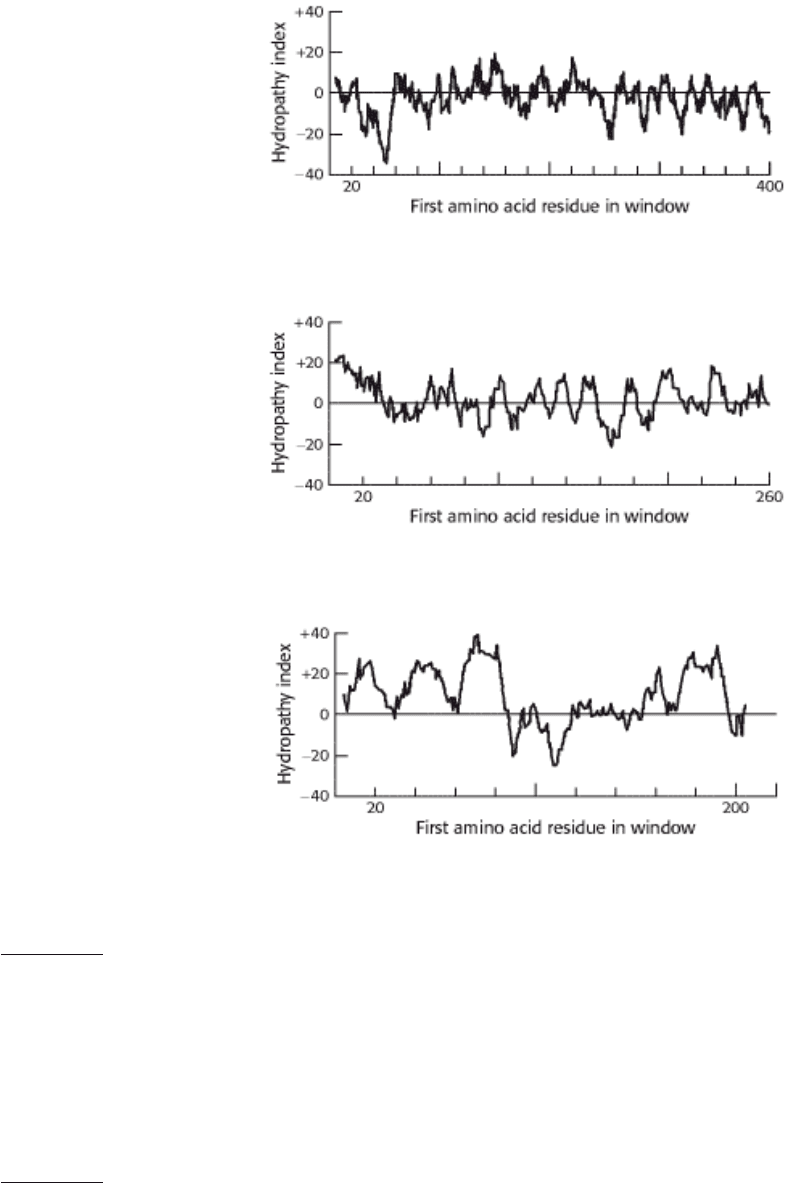
11.
Hydropathy plots. On the basis of the following hydropathy plots for three proteins, predict which would be
membrane proteins. What are the ambiguities with respect to using such plots to determine if a protein is a
membrane protein?
(a)
(b)
(c)
See answer
Chapter Integration Problem
12.
The proper environment. An understanding of the structure and function of membrane proteins has lagged behind
that of other proteins. The primary reason is that membrane proteins are more difficult to purify and crystallize.
Why might this be the case?
See answer

I. The Molecular Design of Life 12. Lipids and Cell Membranes
Selected Readings
Where to start
P. De Weer. 2000. A century of thinking about cell membranes Annu. Rev. Physiol. 62: 919-926. (PubMed)
M.S. Bretscher. 1985. The molecules of the cell membrane Sci. Am. 253: (4) 100-108. (PubMed)
N. Unwin and R. Henderson. 1984. The structure of proteins in biological membranes Sci. Am. 250: (2) 78-94. (PubMed)
J. Deisenhofer and H. Michel. 1989. The photosynthetic reaction centre from the purple bacterium Rhodopseudomonas
viridis EMBO J. 8: 2149-2170. (PubMed)
S.J. Singer and G.L. Nicolson. 1972. The fluid mosaic model of the structure of cell membranes Science 175: 720-731.
(PubMed)
K. Jacobson, E.D. Sheets, and R. Simson. 1995. Revisiting the fluid mosaic model of membranes Science 268: 1441-
1442. (PubMed)
Books
Gennis, R. B., 1989. Biomembranes: Molecular Structure and Function. Springer Verlag.
Vance, D. E., and Vance, J. E. (Eds.)., 1996. Biochemistry of Lipids, Lipoproteins, and Membranes. Elsevier.
Lipowsky, R., and Sackmann, E., 1995. The structure and dynamics of membranes. Elsevier.
Racker, E., 1985. Reconstitutions of Transporters, Receptors, and Pathological States. Academic Press.
Tanford, C., 1980. The Hydrophobic Effect: Formation of Micelles and Biological Membranes (2d ed.). Wiley-
Interscience.
Membrane lipids and dynamics
M.J. Saxton and K. Jacobson. 1997. Single-particle tracking: Applications to membrane dynamics Annu. Rev. Biophys.
Biomol. Struct. 26: 373-399. (PubMed)
M. Bloom, E. Evans, and O.G. Mouritsen. 1991. Physical properties of the fluid lipid-bilayer component of cell
membranes: A perspective Q. Rev. Biophys. 24: 293-397. (PubMed)
E.L. Elson. 1986. Membrane dynamics studied by fluorescence correlation spectroscopy and photobleaching recovery
Soc. Gen. Physiol. Ser. 40: 367-383. (PubMed)
A. Zachowski and P.F. Devaux. 1990. Transmembrane movements of lipids Experientia 46: 644-656. (PubMed)
P.F. Devaux. 1992. Protein involvement in transmembrane lipid asymmetry Annu. Rev. Biophys. Biomol. Struct. 21: 417-
439. (PubMed)
J.R. Silvius. 1992. Solubilization and functional reconstitution of biomembrane components Annu. Rev. Biophys.
Biomol. Struct. 21: 323-348. (PubMed)
P.L. Yeagle, A.D. Albert, K. Boesze-Battaglia, J. Young, and J. Frye. 1990. Cholesterol dynamics in membranes
Biophys. J. 57: 413-424. (PubMed)
J.F. Nagle and S. Tristram-Nagle. 2000. Lipid bilayer structure Curr. Opin. Struct. Biol. 10: 474-480. (PubMed)

W. Dowhan. 1997. Molecular basis for membrane phospholipid diversity: Why are there so many lipids? Annu. Rev.
Biochem. 66: 199-232. (PubMed)
R.P.H. Huijbregts, A.I.P.M. de Kroon, and B. de Kruijff. 1998. Rapid transmembrane movement of newly synthesized
phosphatidylethanolamine across the inner membrane of Escherichia coli J. Biol.Chem. 273: 18936-18942. (PubMed)
Structure of membrane proteins
J.-L. Popot and D.M. Engleman. 2000. Helical membrane protein folding, stability and evolution Annu. Rev. Biochem.
69: 881-922. (PubMed)
S.H. White and W.C. Wimley. 1999. Membrane protein folding and stability: Physical principles Annu. Rev. Biophys.
Biomol. Struct. 28: 319-365. (PubMed)
F.M. Marassi and S.J. Opella. 1998. NMR structural studies of membrane proteins Curr. Opin. Struct. Biol. 8: 640-648.
(PubMed)
R. Lipowsky. 1991. The conformation of membranes Nature 349: 475-481. (PubMed)
C. Altenbach, T. Marti, H.G. Khorana, and W.L. Hubbell. 1990. Transmembrane protein structure: Spin labeling of
bacterio-rhodopsin mutants Science 248: 1088-1092. (PubMed)
G.D. Fasman and W.A. Gilbert. 1990. The prediction of transmembrane protein sequences and their conformation: An
evaluation Trends Biochem. Sci. 15: 89-92. (PubMed)
M.L. Jennings. 1989. Topography of membrane proteins Annu. Rev. Biochem. 58: 999-1027. (PubMed)
D.M. Engelman, T.A. Steitz, and A. Goldman. 1986. Identifying non-polar transbilayer helices in amino acid sequences
of membrane proteins Annu. Rev. Biophys. Biophys. Chem. 15: 321-353. (PubMed)
S. Undenfriend and K. Kodukola. 1995. How glycosyl-phosphatidyl-inositiol-anchored membrane proteins are made
Annu. Rev. Biochem. 64: 563-591. (PubMed)
Intracellular membranes
J.J. Skehel and D.C. Wiley. 2000. Receptor binding and membrane fusion in virus entry: The influenza hemagglutinin
Annu. Rev. Biochem. 69: 531-569. (PubMed)
M.G. Roth. 1999. Lipid regulators of membrane traffic through the Golgi complex Trends Cell Biol. 9: 174-179.
(PubMed)
R. Jahn and T.C. Sudhof. 1999. Membrane fusion and exocytosis Annu. Rev. Biochem. 68: 863-911. (PubMed)
R.M. Stroud and P. Walter. 1999. Signal sequence recognition and protein targeting Curr. Opin. Struct. Biol. 9: 754-759.
(PubMed)
S.A. Teter and D.J. Klionsky. 1999. How to get a folded protein across a membrane Trends Cell Biol. 9: 428-31.
(PubMed)
E.H. Hettema, B. Distel, and H.F. Tabak. 1999. Import of proteins into peroxisomes Biochim. Biophys. Acta 1451: 17-
34. (PubMed)
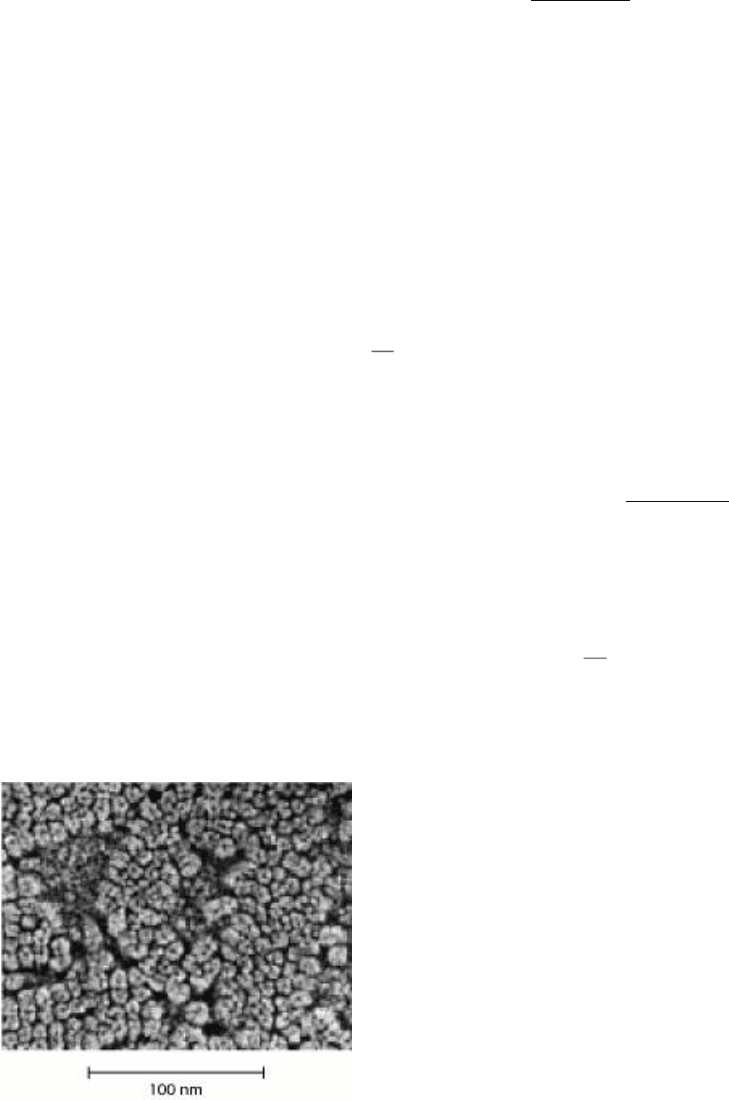
I. The Molecular Design of Life
13. Membrane Channels and Pumps
The lipid bilayer of biological membranes, as discussed in Chapter 12, is intrinsically impermeable to ions and polar
molecules. Permeability is conferred by two classes of membrane proteins, pumps and channels. Pumps use a source of
free energy such as ATP or light to drive the thermodynamically uphill transport of ions or molecules. Pump action is an
example of active transport. Channels, in contrast, enable ions to flow rapidly through membranes in a downhill
direction. Channel action illustrates passive transport, or facilitated diffusion.
Pumps are energy transducers in that they convert one form of free energy into another. Two types of ATP-driven
pumps, P-type ATPases and the ATP-binding cassette pumps, undergo conformational changes on ATP binding and
hydrolysis that cause a bound ion to be transported across the membrane. Phosphorylation and dephosphorylation of both
the Ca
2+
-ATPase and the Na
+
-K
+
-ATPase pumps, which are representative of P-type ATPase, are coupled to changes in
orientation and affinity of their ion-binding sites.
A different mechanism of active transport, one that utilizes the gradient of one ion to drive the active transport of
another, will be illustrated by the sodium
calcium exchanger. This pump plays an important role in extruding Ca
2+
from cells.
We begin our examination of channels with the acetylcholine receptor, a channel that mediates the transmission of nerve
signals across synapses, the functional junctions between neurons. The acetylcholine receptor is a ligand-gated channel
in that the channel opens in response to the binding of acetylcholine (Figure 13.1). In contrast, the sodium and potassium
channels, which mediate action potentials in neuron axon membranes, are opened by membrane depolarization rather
than by the binding of an allosteric effector. These channels are voltage-gated. These channels are also of interest
because they swiftly and deftly distinguish between quite similar ions (e.g., Na
+
and K
+
). The flow of ions through a
single channel in a membrane can readily be detected by using the patch-clamp technique.
The chapter concludes with a view of a different kind of channel
the cell-to-cell channel, or gap junction. These
channels allow the transport of ions and metabolites between cells.
I. The Molecular Design of Life 13. Membrane Channels and Pumps
Figure 13.1. Acetylcholine Receptors. An electron micrograph shows the densely packed acetylcholine receptors
embedded in a postsynaptic membrane. [Courtesy of Dr. John Heuser and Dr. Shelly Salpeter.]
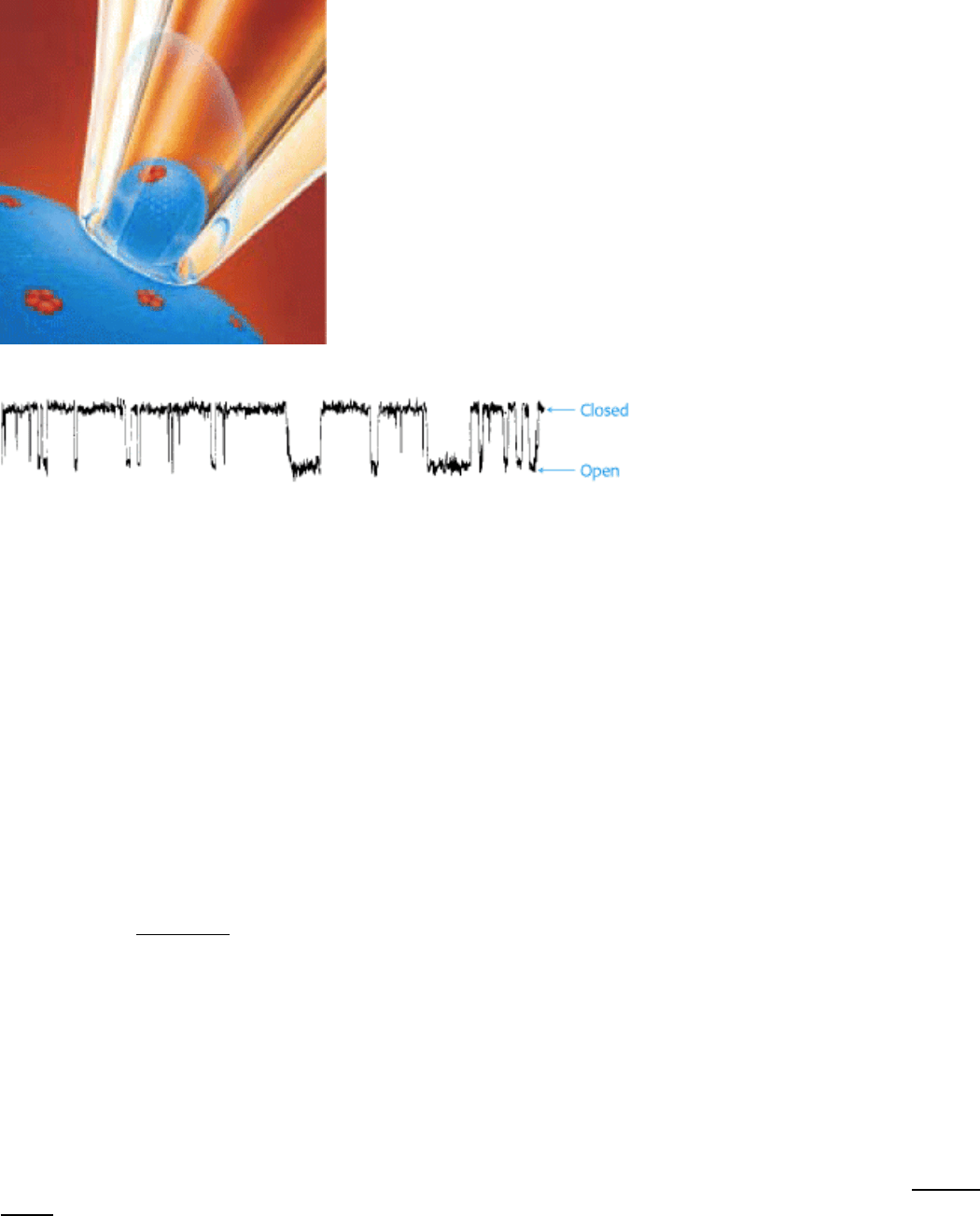
I. The Molecular Design of Life 13. Membrane Channels and Pumps
The flow of ions through a single membrane channel (channels are shown in red in the illustration at the left) can
be detected by the patch clamp technique, which records current changes as the channel transits between the
open and closed states. [(Left) After E. Neher and B. Sakmann. The patch clamp technique. Copyright © 1992 by
Scientific American, Inc. All rights reserved. (Right) Courtesy of Dr. Mauricio Montal.]
I. The Molecular Design of Life 13. Membrane Channels and Pumps
13.1. The Transport of Molecules Across a Membrane May Be Active or Passive
Before we consider the specifics of membrane-protein function, we will consider some general principles of membrane
transport. Two factors determine whether a molecule will cross a membrane: (1) the permeability of the molecule in a
lipid bilayer and (2) the availability of an energy source.
13.1.1. Many Molecules Require Protein Transporters to Cross Membranes
As discussed in Chapter 12, some molecules can pass through cell membranes because they dissolve in the lipid bilayer.
Such molecules are called lipophilic molecules. The steroid hormones provide a physiological example. These
cholesterol relatives can pass through a membrane in their path of movement, but what determines the direction in which
they will move? Such molecules will pass through a membrane located down their concentration gradient in a process
called simple diffusion. In accord with the Second Law of Thermodynamics, molecules spontaneously move from a
region of higher concentration to one of lower concentration. Thus, in this case, an entropy increase powers transport
across the membrane.
Matters become more complicated when the molecule is highly polar. For example, sodium ions are present at 143 mM
outside the cell and 14 mM inside the cell, yet sodium does not freely enter the cell because the positively charged ion
cannot pass through the hydrophobic membrane interior. In some circumstances, as during a nerve impulse (Section
13.5.3), sodium ions must enter the cell. How are they able to do so? Sodium ions pass through specific channels in the
hydrophobic barrier formed by membrane proteins. This means of crossing the membrane is called facilitated diffusion,
because the diffusion across the membrane is facilitated by the channel. It is also called passive transport, because the
energy driving the ion movement originates from the ion gradient itself, without any contribution by the transport
system. Channels, like enzymes, display substrate specificity.
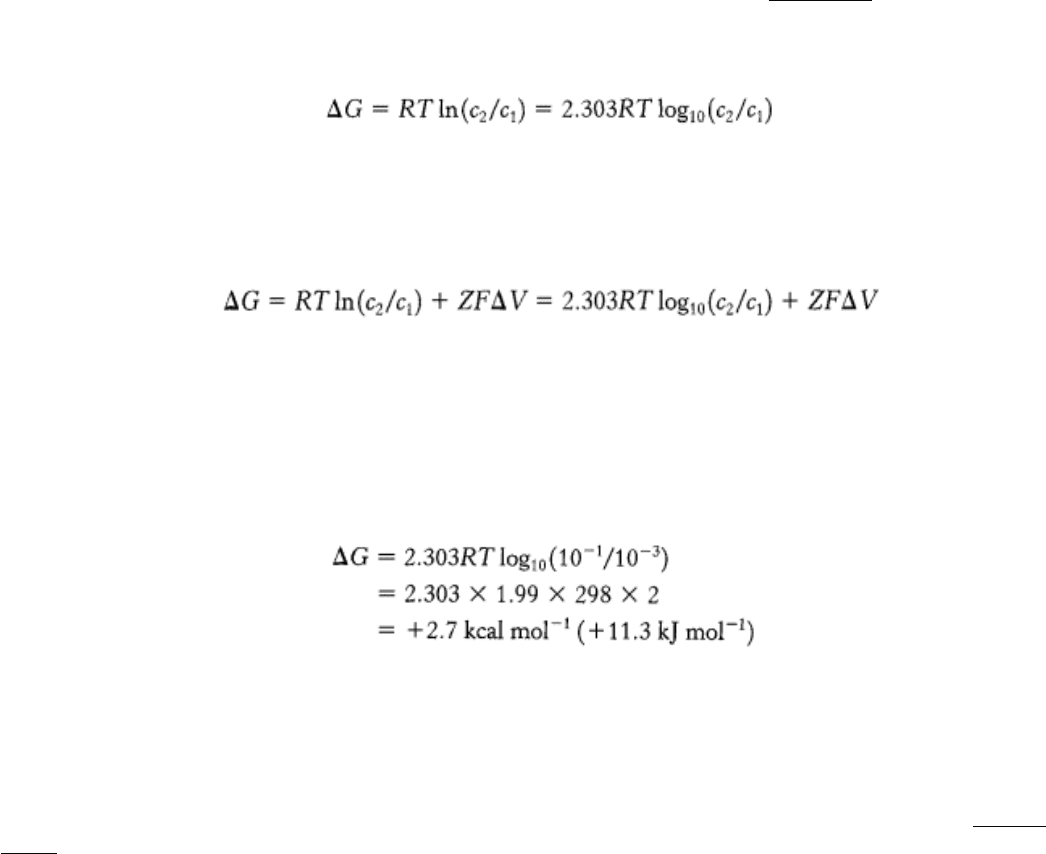
How is the sodium gradient established in the first place? In this case, sodium must move, or be pumped, against a
concentration gradient. Because moving the ion from a low concentration to a higher concentration results in a decrease
in entropy, it requires an input of free energy. Protein transporters embedded in the membrane are capable of using an
energy source to move the molecule up a concentration gradient. Because an input of energy from another source is
required, this means of crossing the membrane is called active transport.
13.1.2. Free Energy Stored in Concentration Gradients Can Be Quantified
An unequal distribution of molecules is an energy-rich condition because free energy is minimized when all
concentrations are equal. Consequently, to attain such an unequal distribution of molecules, called a concentration
gradient, requires an input of free energy. In fact, the creation of a concentration gradient is the result of active transport.
Can we quantify the amount of energy required to generate a concentration gradient (Figure 13.2)? Consider an
uncharged solute molecule. The free-energy change in transporting this species from side 1, where it is present at a
concentration of c
1
, to side 2, where it is present at concentration c
2
, is
For a charged species, the unequal distribution across the membrane generates an electrical potential that also must be
considered because the ions will be repelled by the like charges. The sum of the concentration and electrical terms is
called the electrochemical potential. The free-energy change is then given by
in which Z is the electrical charge of the transported species, ∆ V is the potential in volts across the membrane, and F is
the faraday [23.1 kcal V
-1
mol
-1
(96.5 kJ V
-1
mol
-1
)].
A transport process must be active when ∆ G is positive, whereas it can be passive when ∆ G is negative. For example,
consider the transport of an uncharged molecule from c
1
= 10
-3
M to c
2
= 10
-1
M.
At 25°C (298 K), ∆ G is + 2.7 kcal mol
-1
(+11.3 kJ mol
-1
), indicating that this transport process requires an input of free
energy. It could be driven, for example, by the hydrolysis of ATP, which yields -12 kcal mol
-1
(-50.2 kJ mol
-1
) under
typical cellular conditions. If ∆ G is negative, the transport process can occur spontaneously without free-energy input.
Ion gradients are important energy storage forms in all biological systems. For instance, bacteriorhodopsin (Section
12.5.2) generates a proton gradient at the expense of light energy, an example of active transport. The energy of the
proton gradient in turn can be converted into chemical energy in the form of ATP. This example illustrates the use of
membranes and membrane proteins to transform energy: from light energy into an ion gradient into chemical energy.
